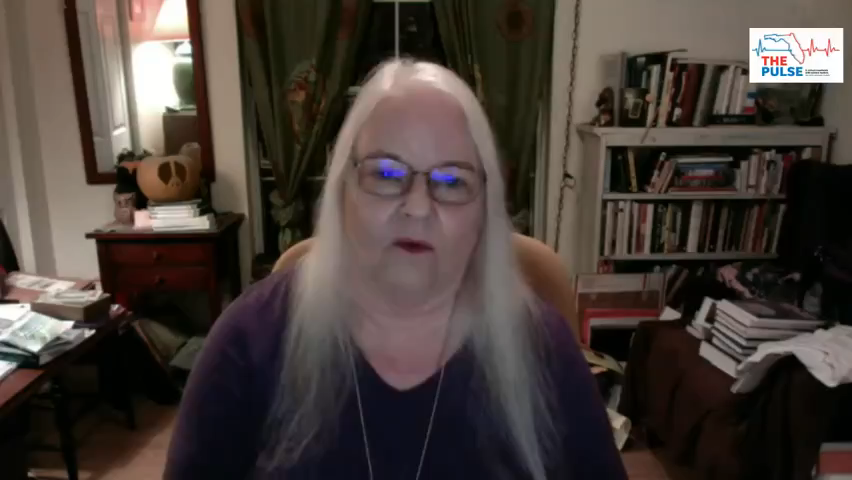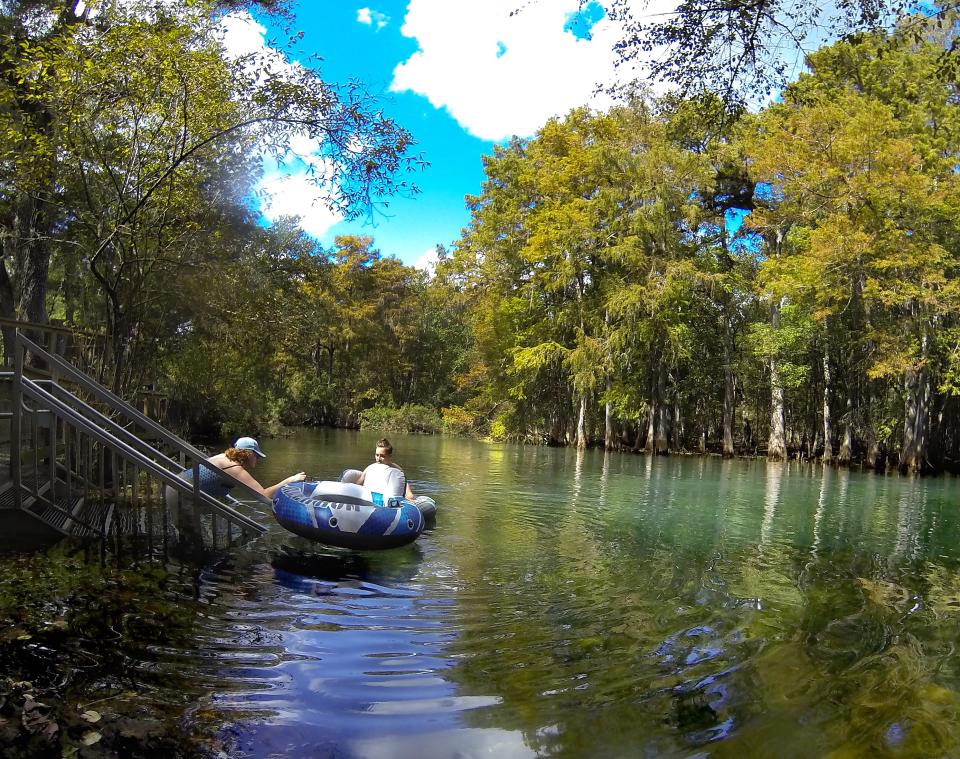Florida provides only the 'illusion of protection' for our springs

What are the bases for claims that Florida provides only the “illusion of protection” for our springs, instead of providing real protection? Unfortunately, there are many examples.
According to Article II, Section 7 of the Florida Constitution, “Natural resources and scenic beauty — (a) It shall be the policy of the state to conserve and protect its natural resources and scenic beauty. Adequate provision shall be made by law for the abatement of air and water pollution and of excessive and unnecessary noise and for the conservation and protection of natural resources.”
Yet according to report cards issued by the Howard T. Odum Florida Springs Institute, these were the overall ecological health grades earned in 2015 by several of Florida’s well-known springs:
Silver Springs, F
Silver Glen, C+
Wekiwa Springs, D-
Manatee Springs, D-
Fanning Springs, F
Poe Spring, C-
Ginnie Spring, D+
Gilchrist Blue Spring, C+
Rainbow Springs, F
Ichetucknee Head Spring, C+.

According to the springs institute, other area springs suffer from intermittent or permanent flow failures, including Poe Spring, Suwannee Spring, Lafayette Blue Spring, Worthington Spring, Fanning Springs, Madison Blue Spring, Peacock Spring, Magnesia Spring, White Sulfur Spring, Santa Fe Spring (Union County), Cannon Spring, Troy Spring, Rum Island Spring and Hornsby Spring.
These failures occur because regulatory agencies exist to regulate the amount of harm that our springs experience, not to protect those springs from harm. The Community Environmental Legal Defense Fund calls this the “regulatory fallacy.”
The Florida Department of Environmental Protection sets minimum flows and levels for springs and rivers in the springs heartland. These are levels below which significant harm occurs to those systems.
When the minimum flows and levels were set for the lower Santa Fe and Ichetucknee in 2015, both were designated as “in recovery” — meaning there was not enough water for both people and the springs and rivers. Despite a huge public outcry several years later, the Suwannee River Water Management District approved a huge water withdrawal permit for a water-bottling operation on the Santa Fe near Ginnie Springs.
The Department of Environmental Protection is also required to create Basin Management Action Plans (BMAPs) to reduce pollution in our springs and rivers. To date, however, there is no proof that any BMAP has been effective.
Several watchdog groups that recently challenged BMAPs for failing to follow state law received unfavorable decisions from an administrative law judge. Those decisions have been appealed, meaning the state is spending our tax dollars to defend its failure to protect our springs.
More Messages from the Springs Heartland:
A wake-up call to local leaders: Lee property should be protected, not developed
Springs protection zone would restrict gas-powered boats on lower Ichetucknee River
The 2022 Springs Summit: information, illusion and inspiration
State agencies’ public relations campaigns advertise spending millions of dollars to fix springs pollution problems. A recent study by the Florida Springs Council, however, found that 90% of that money is allocated to fix less than 18% of the nitrogen pollution in Outstanding Florida Springs.
Only 4% of springs restoration funding is spent to reduce or prevent pollution by agriculture, which is responsible for approximately 70% of all nutrient pollution in those springs. The Florida Springs Council also concluded that based on 2021-2022 projects proposed by Suwannee River Water Management District, it will take 190 years and cost almost $2 billion to achieve water quality goals for the Santa Fe and Ichetucknee rivers. Florida hasn’t yet learned that it’s cheaper to prevent problems than to fix them.
Our “illusion of protection” also has national roots, because federal laws protect business and commerce at the expense of natural systems. Natural systems are considered property and anyone with a title to property has the legal right to harm it.
A “permit” allows destruction of ecosystems. Some major sources of water pollution, such as runoff from agricultural operations, are classified as “non-point sources” and are not regulated by federal law. Corporate personhood means corporations can claim constitutional rights that allow them to sue for lost income.
Given the expense of such lawsuits, state agencies refuse to cap the amount of water that can be withdrawn in Florida — even when such caps could ensure healthier natural systems for everyone to enjoy, and even as those agencies spend taxpayers’ money to defend their own failures in court.
How do we break through these illusions to achieve real protections? That will take major shifts in public consciousness, political will and legal systems. Granting legal rights to natural systems could help. Granting people legal rights to clean and healthy waters could help. A groundswell of votes for healthy water could help.
We could begin with a new vision for Florida’s relationship with water: Recognizing that human, economic and ecosystem health are interconnected, Florida will make restoration, preservation and protection of its waters its highest priority and will become an international model of wise water use.
How many innovations could that vision spark? How many jobs could be created?
How many springs could be saved?
Lucinda Faulkner Merritt is a writer and springs lover who works as the staff assistant/communications coordinator for the Ichetucknee Alliance. This column is part of The Sun's Messages from the Springs Heartland series.
Join the conversation
Share your opinions by sending a letter to the editor (up to 200 words) to letters@gainesville.com. Letters must include the writer's full name and city of residence. Additional guidelines for submitting letters and longer guest columns can be found at bit.ly/sunopinionguidelines.
Journalism matters. Your support matters.
Get a digital subscription to the Gainesville Sun. Includes must-see content on Gainesville.com and Gatorsports.com, breaking news and updates on all your devices, and access to the eEdition. Visit www.gainesville.com/subscribenow to sign up.
This article originally appeared on The Gainesville Sun: Lucinda Faulkner Merritt: Florida springs have 'illusion of protection'

